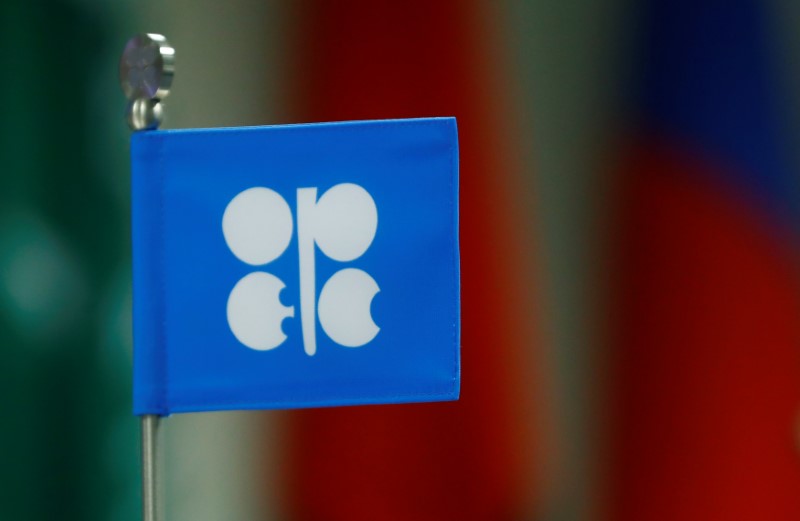By Amanda Cooper
LONDON (Reuters) - It's "mission accomplished" for OPEC in its battle against bulging global inventories of oil, thanks to the production cuts it has had in place for nearly 18 months.
The Organization of the Petroleum Exporting Countries, which supplies a third of the world's oil, agreed to curb output by 1.8 million barrels per day jointly with 10 other producers including Russia until stocks returned to more normal levels.
The overhang of unwanted crude and oil products has reached OPEC's target, but the group now says it would rather see a pickup in investment, which fell by $1 trillion (719.01 billion pounds) in the three years of surplus and weak prices that started in June 2014.
OPEC, which initially targeted the five-year average level of oil inventories in the world's richest nations, has said it might consider using other data that is far harder to track, such as oil in floating storage or as commercial inventory in countries that provide no reliable storage information.
OPEC has said it could come up with other metrics.
Khalid al-Falih, the energy minister for OPEC heavyweight Saudi Arabia, said in early April that output in a number of regions was declining and the only way to avoid a supply shortage in the longer term was for money to start flowing into new upstream projects.
Saudi Aramco Chief Executive Amin Nasser said in March the global oil and gas industry needs to invest more than $20 trillion over the next 25 years to meet growth in demand and compensate for the natural decline in developed fields.
Qatar’s Energy Minister Mohammed al-Sada told Reuters this month that the global oil investment purse of around $400 billion would not be enough.
Investment data from the International Energy Agency confirms OPEC is correct about the drop in spending, but it also shows the situation is not quite as dire as OPEC believes.
On aggregate, compared with the peak in investment of close to $800 billion in 2014, the data shows that spending did drop by some $1 trillion to 2017.
The IEA data suggests the decline amounted to around $340 billion between 2014 and 2017, but this slowed to $120 billion between 2015 and 2018, suggesting recovery is underway.
In fact, the IEA estimates that investment this year will rise for the first time since 2014 to $466 billion, 20 percent lower than in 2011, when the average oil price was above $100 a barrel.
However, what the numbers don't reflect is the huge gain in efficiency since 2014, when oil majors started to force service providers to slash costs. The majors began generating much bigger free cash flows at oil prices of $50 per barrel compared to what they generated when prices were double that level.
Investment in oil and gas picks up as prices hit 3-year highs: https://reut.rs/2KddPaD
Oil has risen 35 percent to around $74 a barrel, its highest since mid-2014, since the coordinated cuts took effect and sources have said Saudi Arabia could be targetting prices of $80 per barrel and even $100.
OPEC and its partners want a high enough price to balance their budgets, which were eroded by years of cheap oil, but not so high that it encourages output from rival producers, particularly in the United States.
Oil producers' budget-balancing act: https://reut.rs/2JpxrHd
The group has repeatedly said the market determines the value of a barrel of oil and its policies are aimed at ensuring a balance between supply and demand.
Global oil inventories relative to demand: https://reut.rs/2Js9DCI

OPEC members' compliance with crude output cuts: https://reut.rs/2J6lmGZ